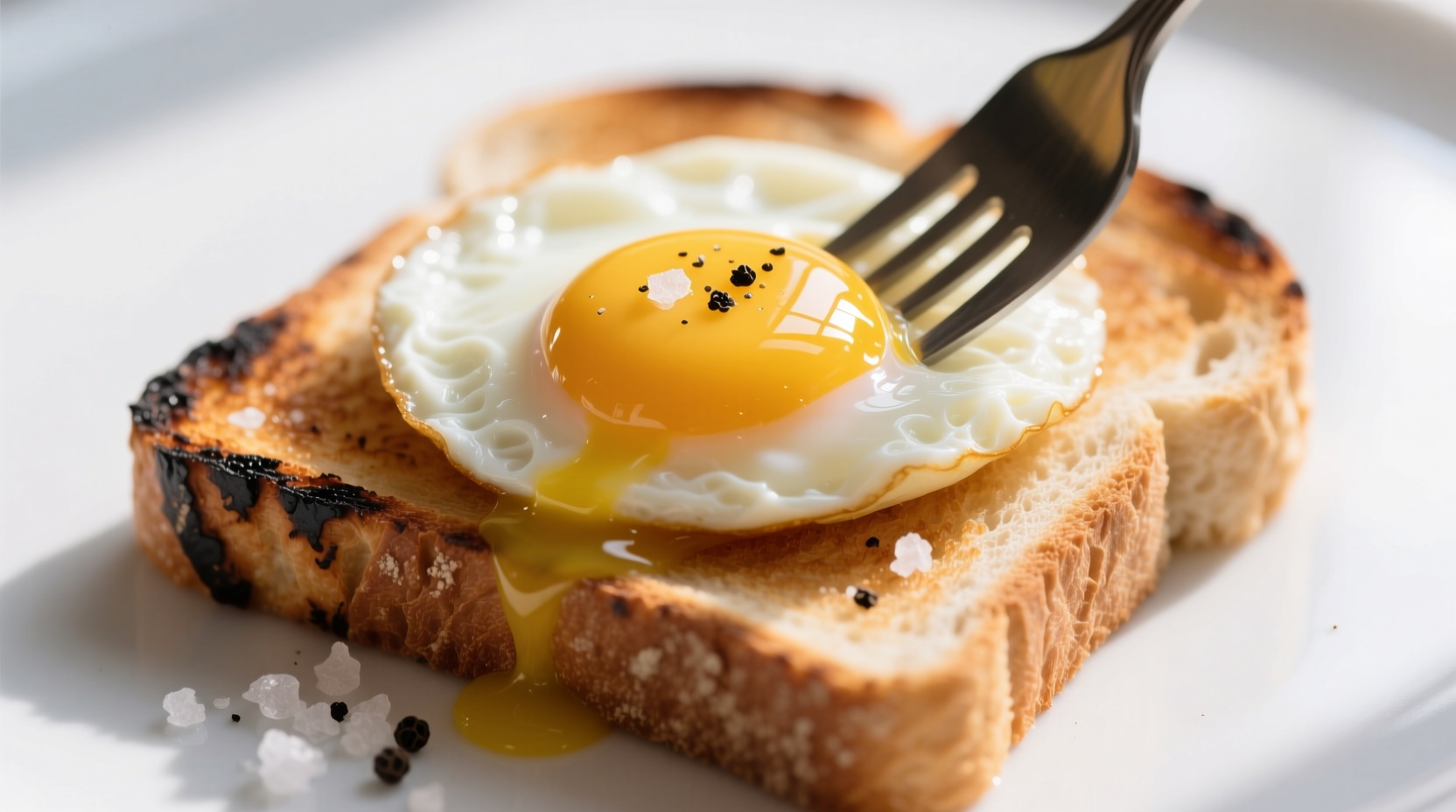Perfect poached eggs require fresh eggs, simmering (not boiling) water, and a gentle swirl technique. Cook for 3-4 minutes for runny yolks. Add 1-2 tablespoons of vinegar per quart of water to help egg whites coagulate, and always use the freshest eggs possible for tighter, neater results.
Mastering poached eggs transforms breakfasts and elevates dishes like Eggs Benedict from ordinary to extraordinary. As a chef who's taught thousands of home cooks, I've found that most poaching failures stem from just three common mistakes: water that's too hot, using older eggs, and skipping the vinegar. Let's fix those issues and get you consistently perfect poached eggs every time.
Your Complete Guide to Perfect Poached Eggs
Why Your Poached Eggs Fail (And How to Fix It)
Before diving into the technique, understand why most home cooks struggle with poached eggs. Water temperature is the #1 culprit - boiling water shreds delicate egg whites. Older eggs spread more because their whites are thinner. And without proper technique, you'll end up with wispy, stringy results instead of neat oval packages.
Essential Equipment Checklist
- Medium saucepan (3-4 quart capacity)
- Slotted spoon (silicone-coated works best)
- Vinegar (white or distilled)
- Fresh eggs (less than 7 days old)
- Small bowl for cracking eggs
- Timer
Step-by-Step Poaching Technique
Preparation Phase: Setting Up for Success
Start with the freshest eggs possible - check the Julian date on your carton. Fresher eggs have tighter albumen that holds shape better. Fill your saucepan with 3 inches of water and add 1-2 tablespoons of vinegar per quart. The vinegar helps egg whites coagulate faster without affecting flavor.
Heat the water to a gentle simmer - you should see small bubbles rising but no rolling boil. Ideal temperature is 180-190°F (82-88°C). If you don't have a thermometer, look for wisps of steam and tiny bubbles forming at the bottom of the pot, but no vigorous bubbling.
Cooking Phase: The Swirl Method
This professional technique creates that signature oval shape:
- Crack each egg into a separate small bowl
- Stir the water vigorously to create a gentle whirlpool
- Pour the egg from the bowl into the center of the vortex
- Cook undisturbed for 3-4 minutes (3 for very runny yolks, 4 for set but still soft)
- Remove with slotted spoon and drain briefly on paper towels
| Poaching Method | Best For | Pros | Cons |
|---|---|---|---|
| Traditional Swirl | Most applications | Restaurant-quality results, no special equipment | Requires practice |
| Vinegar-Free | Sensitive palates | No vinegar taste | Requires extremely fresh eggs |
| Egg Pod Method | Beginners | Consistent shape, minimal mess | Requires special equipment |
Timing Breakdown: The Critical Minutes
Understanding what happens during each minute of cooking helps you achieve your desired doneness:
- 0-60 seconds: Egg whites begin coagulating, forming the outer shell
- 60-180 seconds: Whites continue setting while yolks remain completely liquid
- 180-240 seconds: Yolks begin thickening at the edges while center remains runny
- 240+ seconds: Yolks fully set (not recommended for traditional poached eggs)
Pro Tips for Restaurant-Quality Results
Freshness matters: Use eggs within 7 days of purchase. The USDA confirms that fresher eggs have thicker whites that hold shape better during poaching (USDA Egg Safety Guidelines).
Temperature control: Maintain water between 180-190°F throughout cooking. If bubbles become vigorous, remove from heat briefly.
Strain older eggs: If using eggs past their prime, strain them through a fine mesh sieve before poaching to remove watery whites.
Rest before serving: Let poached eggs sit in cold water for 30 seconds to stop cooking, then reheat briefly in warm water before serving.

Troubleshooting Common Problems
Egg whites spreading: Water too hot or eggs not fresh enough. Lower heat and use fresher eggs.
Grayish film on whites: Too much vinegar or cooking too long. Reduce vinegar to 1 tbsp per quart and shorten cooking time.
Overcooked yolks: Water temperature too high or cooking time too long. Use thermometer to maintain proper temperature.
Serving Suggestions and Pairings
Serve immediately for best results. Classic pairings include:
- Eggs Benedict with Canadian bacon and hollandaise
- Avocado toast with everything bagel seasoning
- Salads for added protein (try on top of arugula with lemon vinaigrette)
- With smoked salmon and dill on rye bread
Advanced Techniques Worth Trying
Make-Ahead Method: Poach eggs, then immediately plunge into ice water. Store in refrigerator for up to 24 hours. Reheat by placing in warm (not boiling) water for 30-60 seconds before serving.
Vinegar Alternatives: For those sensitive to vinegar taste, try adding 1 teaspoon of lemon juice per quart of water instead - it provides similar coagulation benefits with a more neutral flavor.
Safety Considerations
For those with compromised immune systems, cook poached eggs to 145°F internal temperature (about 4-5 minutes). The FDA recommends cooking eggs until both whites and yolks are firm for vulnerable populations (FDA Food Safety Guidelines).
Perfect Poached Eggs: Summary Checklist
- Use the freshest eggs possible (within 7 days)
- Maintain water temperature at 180-190°F
- Add 1-2 tbsp vinegar per quart of water
- Create a gentle whirlpool before adding eggs
- Cook 3-4 minutes for perfect runny yolks
- Remove with slotted spoon and drain briefly











 浙公网安备
33010002000092号
浙公网安备
33010002000092号 浙B2-20120091-4
浙B2-20120091-4